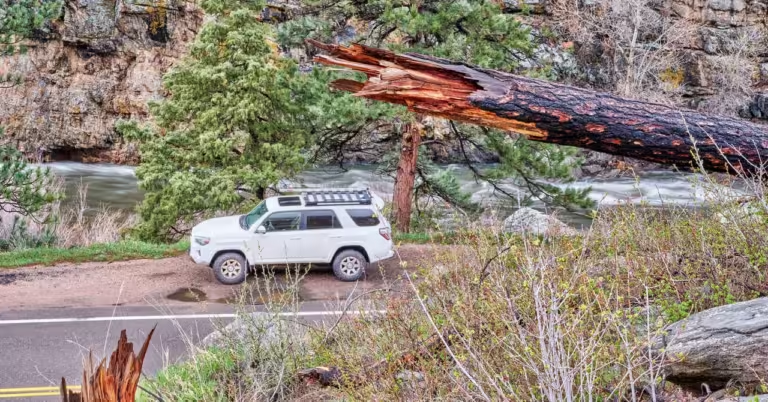If you were standing After the 2020 Cameron Peak wildfire, the water gurgling along the banks of Colorado’s Cache la Poudre River might have looked black. This slurry of ash and charred soil flowed downstream toward a reservoir that supplies drinking water to the city of Fort Collins, which has a population of about 170,000. Though the water looked clear again after a few weeks, Charles Rose, a research biogeochemist at the U.S. Forest Service’s Rocky Mountain Research Station, says contaminants from the fire can still be found in the watershed.
Recent studies have shown that while some watersheds begin to recover within five years of a fire, others are fundamentally altered and may never fully return to their pre-fire state. And as the world warms, wildfires become more frequent, larger, and burn longer, leaving hydrologists, ecologists, and water managers scrambling to understand and mitigate the impacts of fire-contaminated water on people and ecosystems.
Healthy forests have a lot of “trash” on the ground: pine needles, dead leaves, and debris. “It acts like a sponge,” Rhodes says. “When rain falls, it slowly moves through that layer and soaks into the soil.” When fires scorch land, that plant and organic matter burns, leaving bare land that’s vulnerable to erosion. Instead of soaking into the ground, rain slides off the surface and moves quickly, picking up soil and carrying it into streams and rivers. Not only does this cause sediment to build up, but it can disrupt the chemistry of the water. Rhodes found elevated levels of nutrients like nitrogen in streams about 15 years after major fires. These nutrients can lead to harmful algae blooms, but they don’t directly affect drinking water quality. But elsewhere, levels of heavy metals like manganese, iron, and even lead have been elevated after major fires, which can complicate the water treatment process.
Other areas in the western United States, such as Taos, New Mexico, and Santa Cruz, California, face similar problems as climate change and decades of fire suppression have increased the frequency and duration of wildfires. For much of the 20th century, the U.S. Forest Service and other land management agencies aimed to prevent all fires, believing that was the best way to protect forests. However, naturally occurring, low-intensity fires improve forest health and prevent the accumulation of dense undergrowth and dead wood for fuel.
“140 years of fire suppression has left a lot of fuels building up on this land, and as a result, combined with an increase in severe weather, we’re finding that the potential for really intense fires is much higher than it used to be,” says Alisa Cordner, an environmental sociologist, professor, and volunteer wildland firefighter at Whitman College in Washington. “We’re also seeing more people living next to forests and moving into places that are at the wildfire-urban interface.” Any municipality is at risk of water pollution if wildfire burns through a watershed.
“Consumers have little knowledge of everything that’s going on below the surface,” Rose says. After wildfires, water utilities work tirelessly to ensure residents don’t experience water impacts. This requires coordination with land management agencies like the Forest Service, USGS, and local governments. Water utilities regularly test water quality, install sediment control structures, and sometimes change water treatment protocols to address increased contaminants.

